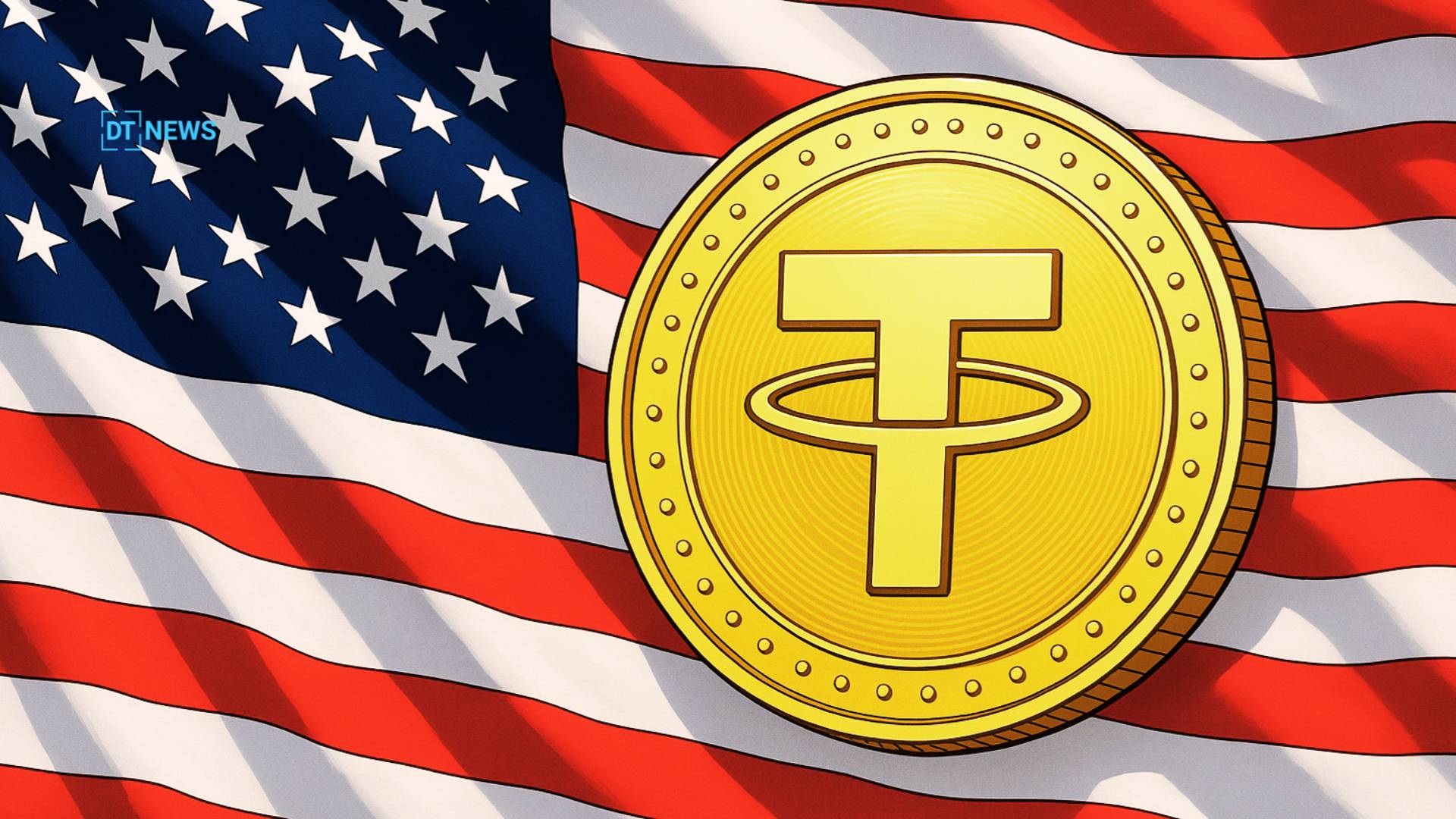According to Bloomberg, Tether US expansion plans are aligning with the evolving US stablecoin regulation, which points to a major strategic shift. This move follows the signing of the GENIUS Act by President Donald Trump, which sets clear rules for stablecoin use in the U.S.
- What is Driving Tether’s Renewed U.S. Focus?
- How Will the U.S.-Specific Stablecoin Differ from USDT?
- Why Is Tether Avoiding a Public Listing?
- What Role Do Partnerships and Investments Play?
- Conclusion
- FAQs
- 1. What triggered Tether Us expansion plan?
- 2. Who signed the GENIUS Act into law?
- 3. What does Tether aim to become in the U.S. market?
- 4. What sectors is Tether investing in alongside crypto?
- 5. Who is Tether’s new U.S. stablecoin for?
- Glossary
Tether’s CEO, Paolo Ardoino, said the company is working on new U.S.-based products made especially for institutions like trading firms, banks, and large businesses. Instead of staying outside the U.S. system, Tether now wants to become a key part of the country’s regulated financial market.
What is Driving Tether’s Renewed U.S. Focus?
The passing of the GENIUS Act is a major turning point for Tether. For years, US stablecoin regulation was unclear, but now the U.S. has set clear rules like full reserve backing, anti-money laundering (AML) checks, and regular audits for stablecoin issuers.

Tether’s CEO, Paolo Ardoino, called the law a “critical enabler” that will help institutions get involved and bring more trust and adoption to the market. This move shows that digital finance is becoming more regulated, and Tether wants to be a leader in this space.
In a Bloomberg interview, Paolo Ardoino said the company is working on its U.S. plan, mainly focusing on businesses and financial institutions instead of regular users.
How Will the U.S.-Specific Stablecoin Differ from USDT?
Tether’s current USDT token is still the most actively traded digital asset worldwide, with more than $162 billion in circulation as of July 2025.
However, the company’s new product, developed under US stablecoin regulation, is designed to serve a different purpose. It will focus on institutional needs such as cross-border payments and tokenized financial systems.
The new stablecoin will fully follow the latest regulatory rules, including regular audits, full reserve requirements, and AML checks, features that, according to Ardoino, will help distinguish it from other stablecoin offerings.
In contrast to USDT, which has faced criticism in the past over the clarity of its reserves, the upcoming U.S.-oriented stablecoin will offer greater transparency and operate under a fully licensed framework as required by the GENIUS Act.
Why Is Tether Avoiding a Public Listing?
Unlike Circle, the company behind USDC that has gone public and supports open U.S. operations, Tether is choosing a different path. Ardoino emphasized that the company has no plans to list.
Instead, it prefers private growth through institutional partnerships, believing that maintaining control over its operations will better serve its long-term vision.
Ardoino repeated that Tether chooses to stay private while forming regulated partnerships. This helps the company quickly adapt to new rules and keep growing, especially in developing countries.
What Role Do Partnerships and Investments Play?
The Tether US expansion is part of a bigger plan. The company is also putting a lot of money into building strong support systems.

It has raised its investment in Bitdeer, a large mining company, and has also stepped into the biotech and media sectors. These actions match the GENIUS Act’s goals, which require strong operations and clear records of reserves.
Tether’s partnership with Rezolve AI is especially important. Together, they are working to bring stablecoins into the $30 trillion retail payments market by using Microsoft Azure and Google Cloud technology.
This highlights Tether’s plan to follow US stablecoin regulation while also aiming to drive bigger changes in the financial system.
Conclusion
Based on the latest research, US stablecoin regulation is no longer holding Tether back, it has become a guide for change. The GENIUS Act has given Tether the clear legal direction it needed to move away from its global retail focus and start building for U.S. institutions.
With the Tether US expansion now in progress, the company is matching its plans with both market needs and official rules, marking a new chapter for stablecoin development.
With $162 billion already moving through its network and a new product made for institutions on the way, Tether has the chance to set the standard for stablecoin growth under US stablecoin regulation.
Read this next and understand why the GENIUS Act is important and becoming the backbone of stablecoin policy in 2025.
Summary
Tether US expansion plan under the new GENIUS Act, a law signed by President Trump has brought new regulatory clarity. The company is creating a separate stablecoin designed for institutional use, such as banks and trading firms, with full regulatory compliance. Unlike rivals like Circle, Tether plans to stay private and grow through partnerships. With $162 billion in circulation and strict oversight, Tether US expansion may set a new benchmark for regulated digital finance.
FAQs
1. What triggered Tether Us expansion plan?
The passing of the GENIUS Act in 2025.
2. Who signed the GENIUS Act into law?
President Donald Trump.
3. What does Tether aim to become in the U.S. market?
A regulated financial leader under U.S. law.
4. What sectors is Tether investing in alongside crypto?
Mining, biotech, and media.
5. Who is Tether’s new U.S. stablecoin for?
Institutions like banks, trading firms, and large businesses.
Glossary
USDT – Tether’s original stablecoin used globally in crypto trading.
Paolo Ardoino – CEO of Tether, leading its U.S. expansion.
Tokenized Finance – Digital versions of real-world assets or systems on blockchain.
Public Listing – When a company’s shares are offered to the public via stock markets.
AML Checks – Anti-Money Laundering processes to track and prevent illegal funds.
Full Reserve – System where stablecoins are backed 1:1 by actual assets.
Sources



















































































































